Spreading Metal with a Fuller |
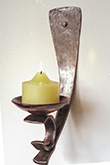 |
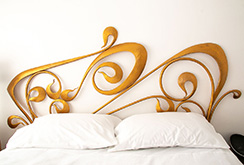 |
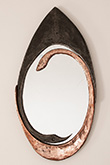 |
When a piece of metal is struck with a hammer it will spread and flow if hot enough. How it spreads depends on the shape of the hammer used. If its face is large and flat, the spread is in all directions. If however, the face is thin and narrow, the spread is in only one direction; at right angles to the face. This controlled spreading is referred to as "fullering" and is used by a blacksmith to skillfully sculpt and shape metals purely by hammering.
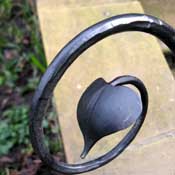
This is the shape that will be forged; a stylised ivy leaf. Note how the stem thins as it sweeps round, creating an elegant transition where it joins the leaf. The leaf and stem are one piece; there is no joint.
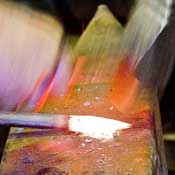
The first stage is to forge a blunt taper on the end of the bar. This is done by hammering it at an angle whilst also holding the stem at a slight angle on the anvil.
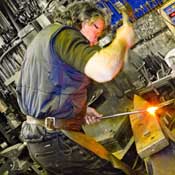
The edge of the anvil is used as a fuller. The hammer's blow causes the metal to flow lengthways whilst hardly moving sideways.
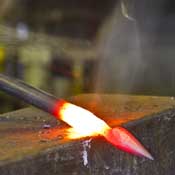
This is the result of the last stage; a bud has formed on the end of the bar. The stem will be thinned and lengthened further once the leaf has been forged.
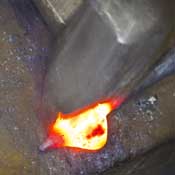
The hammer's cross pein is now used to fuller the steel. This causes it to flow sideways as the leaf begins to form.
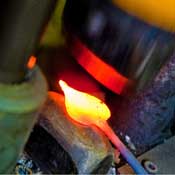
A power hammer is used to spread large leaves.
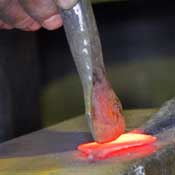
A decorative vein is stamped into the leaf using a blunt chisel.
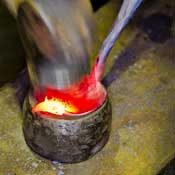
The leaf is hammered into a dishing swage to dome it, the tip is then bent over.
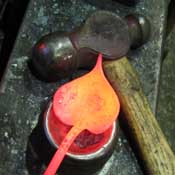
This is the double ball pein hammer and the swage used.
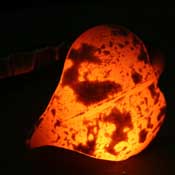
The leaf is fully forged and now the stem will be refined.
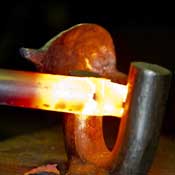
After the stem has been thinned and tapered, it is curved using a bending fork.
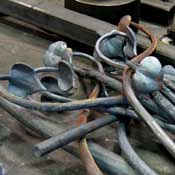
This collection of leaves will be fettled and cleaned up with light filing before they are incorporated into a gate. The blue grey scale is a type of iron-oxide that forms on the surface of iron or steel when it is heated.
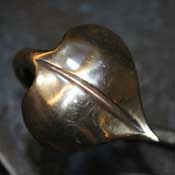
This leaf was forged from bronze but the same methods were used. It takes time to make work this way but it is time well spent. No mass produced, stamped out, component has the same elegance and liveliness.